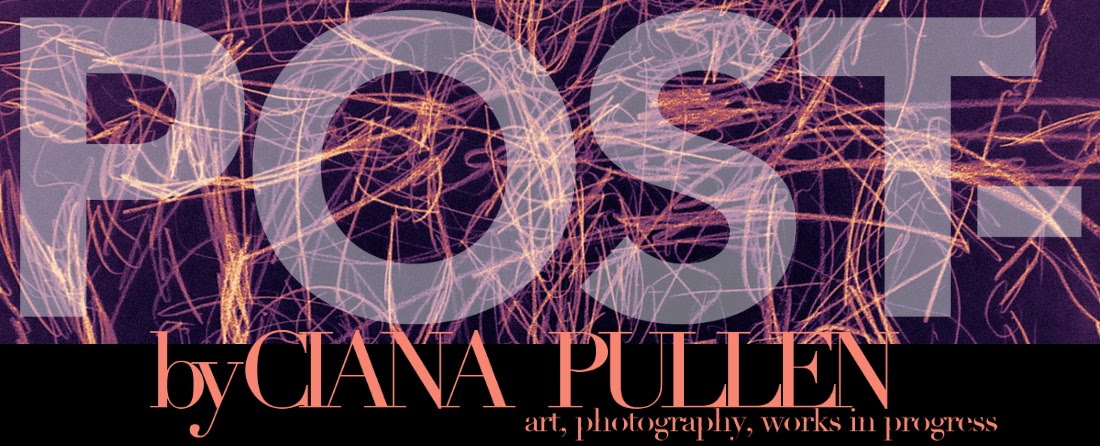This post is part of the series Ciana's Notes on Portraiture (see Neck, Shoulders & Spine here).
When I was 13 my popular friend from camp told me that if a boy saw a stray hair between a girl's eyebrows, even one, he would actually vomit with disgust. I believed her for about 5 minutes, then reasoned that if this were true surely I'd have seen it occur. Especially considering the company I kept.
But long gone are the days when a breezy beauty writer could flabbergast their audience by commanding, "Put down those tweezers..." The brow renaissance (brennaissance?) may even be inching like two bushy caterpillars toward its dénouement. I will miss the delicious twistedness of seeing otherwise normal looking faces with maniacal black brows painted onto them. During the scant four years since I applied my first ever brow product, I tried a few looks in the privacy of my bathroom, like brushing all the hairs straight up and gelling them in place á la "Olsen twin natural look" or outlining them with pale concealer to make them "pop."
It is only now that I appreciate the forbidden natural flaws of the brow. They grow in swirly patterns, like the hair on our scalps! Sometimes they have no real edge, like two nebulae. Sometimes they're wizard-like.
Since most of the great Western portraits of the past depict at least somewhat natural brows-- unplucked, unfilled and timeless-- they show something important that fashion photos often don't: you can see the curvature of the skull underneath the brow hairs.
When we look at brows, we're seeing not only the color of the hair but also the skin in between those hairs. The hairs cast a shadow on the skin, so the skin will look lighter where the hair is sparse and where the skin curves out toward the viewer:
 |
| Carolus Duran (detail), by John Singer Sargent |
|
They wrap around the lumps of the skull like a mountain trail. As the perspective shifts, their shape can change drastically:
 |
| Emily Sargent (detail), by John Singer Sargent |
 |
| A Spanish Woman (detail), by John Singer Sargent |
Brows can be both lighter and darker than skin. Pay close attention:
 |
| Admiral Augustus Keppel (detail) by Sir Joshua Reynolds |
The density of hairs can form swirls like calligraphy-- especially at the inner corners. They aren't a solid shape that's filled in. Look for the planes and patches of color that the hairs form as they undulate like schools of fish:
 |
| Young Girl Wearing a White Muslin Blouse (detail), by John Singer Sargent |
Often the tail of the brow is indiscernible and melts into the valley between the brow and the outer corner of the eye:
 |
| Caspar Goodrich (detail), by John Singer Sargent |
Sometimes the inner corners melt into the shadows at the bridge of the nose:
 |
| Portrait of Victorine-Louise Meurent (detail), by Eduard Manet |
 |
| Don Sebastian de Morra (detail), by Diego Velasquez |
They can look thinner or thicker, shorter or longer depending upon how the light hits them:
 |
| The Daughters of Sir Edward Darley Boit (detail), by John Singer Sargent |
Brows are three-dimensional. They have highlights and shadows when they stick out:
 |
| Portrait of Victorine-Louise Meurent (detail) by Eduard Manet |
Brows describe the bridge of the nose:
 |
| Portrait of a Negro Buttoning His Shirt (detail), by Maurice Quentin de la Tour |
The edges of brows melt into the skin-- there's rarely a harsh line. The color blends, and often the brushstrokes pull the colors together:
 |
| Juan de Pareja (detail), by Diego Velasquez |
 |
| The Dwarf Francisco Lezcano, Called "El Nino de Vallecas" (detail), by Diego Velasquez |
Even the darkest brow is rarely as dark as the novice painter believes it to be. Too stark of a contrast with the skin (the "wooly worm effect," as my high school art teacher called it) can be the tell-tale sign of an amateur:
 |
| Self Portrait (detail), by Sir Joshua Reynolds |
What about the rest of the face? Stay tuned for more in this series of posts called Ciana's Notes on Portraiture (see Neck, Shoulders & Spine here).















No comments:
Post a Comment